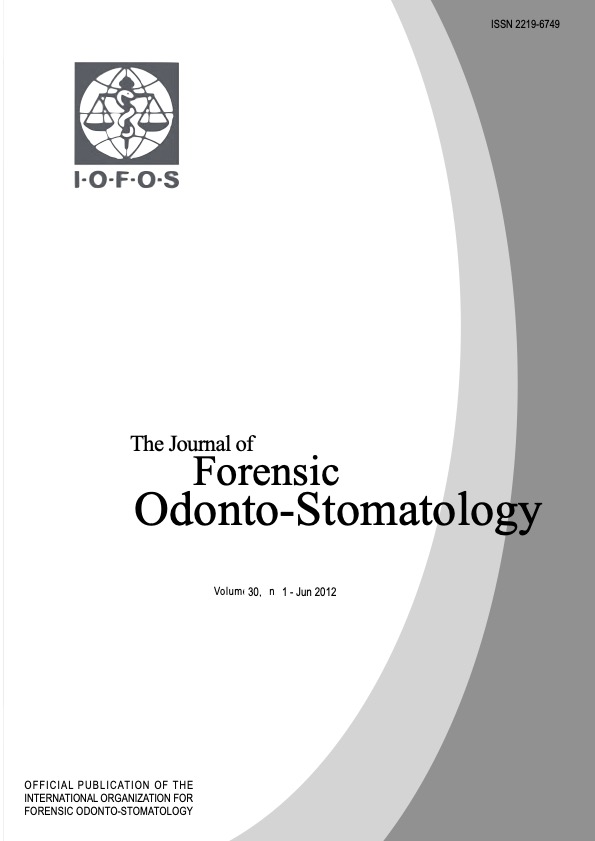The tooth for molecular analysis and identification : a forensic approach
Keywords:
tooth, apical root, identification, genetic profileAbstract
The aim of this study is to optimize laboratory preparation of teeth for DNA identification. By sectioning the tooth topographically into two different radicular portions, it was analyzed whether these portions of mineralized tissue differ in the quantity and quality of DNA they contain.
25 teeth were subject to different experimental conditions and total DNA was quantified for each individual tooth's radicular portion: apical and remaining root, according to a 2003 study by Gaytemenn and Sweet.
We verified, with statistically significant figures, that the apical portion of the tooth is that which contains the greatest quantity of DNA. Different analytical procedures were studied for various polymorphic markers to evaluate the quality of the DNA.
We concluded that the tooth is topographically distinct in both DNA quantity and quality. The tooth's apical portion is the preferential choice in sample preparation of dental mineralized tissue for molecular analysis and identification

